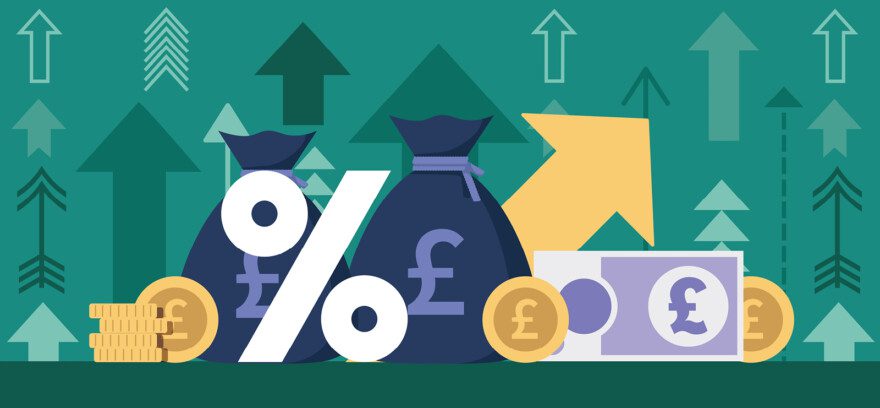UK markets ended a volatile week in positive territory, with the FTSE 100 Index rising by 1.35% to trade at 8,260 points at the time of writing.
Chancellor of the Exchequer Rachel Reeves is expected to reveal a near £20 billion hole in the public finances next week, as the new Labour government accuses the Conservatives of a failure to properly run the government budget. Reeves will outline on Monday the results of an audit of shortfalls in funding plans, which is expected to pave the way for tax increases this year. The figure of approximately £20 billion, that could change as work continues, represents an annual gap between revenues and funding commitments in areas such as asylum and public sector pay.
British business activity picked up this month after a pause in the run up to 4th July general election, driven by the fastest manufacturing growth in two years and the strongest influx of new orders since April 2023, according to a major survey released on Wednesday.
July’s S&P Global Flash Composite Purchasing Managers’ Index (PMI) rose to 52.7 from June’s six month low of 52.3, higher than the 52.6 forecast in a Reuters poll of economists. The results were also stronger than the same survey from the Eurozone, which fell to 50.1 from 50.9, below all economists’ forecasts and close to recession territory.
The UK services PMI rose slightly less than expected, but the manufacturing sector surpassed expectations, reaching its highest level since July 2022. This is a positive sign for Keir Starmer’s new government, which aims for faster growth to increase public spending. Companies in both sectors are more optimistic, though some of the recent rebound might be catch-up growth after last year’s weak performance. The UK economy grew just 0.1% last year, with the IMF forecasting 0.7% growth for 2024.
Commodity markets
In the commodity markets, Brent crude futures traded around $82 per barrel on Friday and are set for a weekly decline, as concerns about the health of China’s economy grew after the country’s central bank cut rates twice in a week. The People’s Bank of China slashed interest rates in an unexpected move on Monday, followed by a surprise cut to its medium-term facility lending rate on Thursday. China’s government also announced more stimulus to boost weak consumption.
Unlike the US, which is poised to cut rates as higher rates tame inflation, China is cutting rates to stimulate the economy and avoid a deflationary spiral. China’s oil imports were down 10.7% year over year in June, while refined product imports fell 32% over the same period, according to customs data. The drop is likely driven by continued weakness in Chinese demand, and some pick-up in Iranian exports. Hopes for a cease-fire in the Israel-Hamas conflict could also reduce oil price risks.
Gold prices dipped to $2,370 an ounce on Friday, their lowest in two weeks, as investors shifted to other sectors. China’s net gold imports via Hong Kong dropped 18% in June, and there were also declines in silver and platinum group metals, driven by weakness in equity markets affecting industrial metals.
Equity markets
US equity futures rose on Friday as investors awaited the latest personal consumption expenditure price index report, the Federal Reserve’s preferred inflation measure. On Thursday, the Dow Jones Industrial Average gained 0.20%, while the S&P 500 and Nasdaq Composite fell by 0.51% and 0.93%, respectively. This week marked the worst sessions for major US averages since 2022, with a selloff in top tech stocks and a shift toward more traditional economic sectors.
Data from the Bureau of Economic Analysis showed the US economy grew at a 2.8% annualised rate in the second quarter, surpassing economists’ expectations of 2% GDP growth and marking a jump from the first quarter’s 1.4% rate. The figures are another sign of continued consumer resilience as the Federal Reserve decides when to cut rates from their 23-year high of 5.25-5.5%. The two-year US Treasury yield increased slightly, reflecting diminished expectations for rate cuts this year, although markets still anticipate two cuts by December. Consumer spending accelerated to a 2.3% increase, up from 1.5% in Q1.
Nevertheless, figures from earlier this month suggest that the labour market has started to soften, bolstering the cast for an imminent rate cut. The number of people claiming unemployment benefits in the US fell by 10,000 to 235,000 on the period ending 20th July, below market expectations of 238,000. Despite its decline, the claim count remained significantly above this year’s average, indicating that although the US labour market is still historically tight, it has softened since its post pandemic peak.
The information provided in this communication is not advice or a personal recommendation, and you should not make any investment decisions on the basis of it. If you are unsure of whether an investment is right for you, please seek advice. If you choose to invest, your capital may be at risk and the value of an investment may fall as well as rise in value, so you could get back less than you originally invested.
